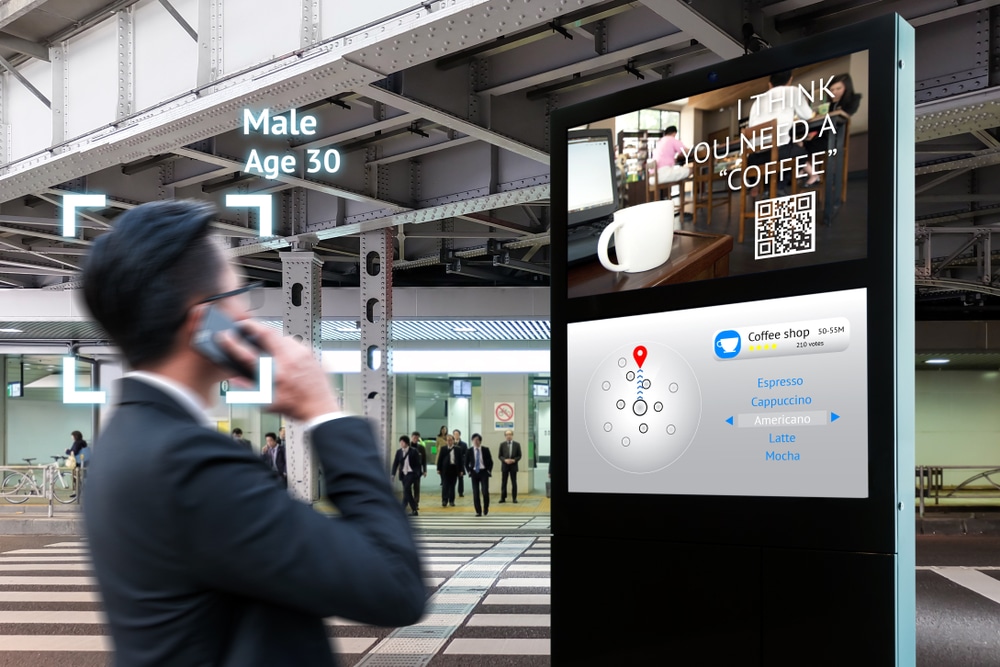New technology in retail is changing the way consumers shop, but these advances may not be evident at first glance. Flashy new smart speakers or wearable devices are gaining more attention from marketers, but the future of marketing lies in what’s going on behind the scenes. Remarketing, enhanced beaconing, and evolving search algorithms may not be as exciting to the general public as smart speakers or virtual reality, but they lay the foundation for the future of marketing.
Marketers have more opportunity to reach consumers in the shopping aisle than they’ve ever had before. Developments in technology enhance mobile experiences for consumers. For example, smart speakers and wearable devices act as digital sales assistants that guide consumers to products. Brands should take advantage of these tools to improve their reach and expand their market share.
Machine Learning Enhances Remarketing
Remarketing, or the ability to send targeted messages to consumers who’ve visited a site before, allows brands to connect with those most likely to make a purchase. A consumer who visited a brand’s website to read up on hair dye, as an example, may later go to Facebook or Google and see targeted ads for that brand’s products. As they’ve shown interest in the brand before, they’re far more likely to click on that ad and make a purchase.
Machine learning enhances this experience by making more accurate predictions on future purchase behaviors. The data may show that a consumer who purchases hair dye will most likely buy that same color six to eight weeks later. The program learns that this is the typical purchase behavior of a hair dye buyer in this particular demographic. It may then begin displaying ads for that same product six to eight weeks after the initial purchase due to this knowledge.
This automatic process offers marketers many benefits. It can reduce programmatic costs by allowing brands to target those most likely to buy. It also provides flexibility by enabling brands to create various remarketing funnels and personalize the message based on those groupings. Finally, it enhances the experience for the end-user by making proactive offers on search engines or social media without disrupting them.
Search Engines Change for Voice and Image Search

In the early days of search algorithms, keywords drove results. A text post which used the keyword most frequently would climb to the top of the ranks. This system resulted in keyword stuffing which drove search engine developers to look to relevance and reputation as a deciding factor in ranking. That relevance was established by a number of factors including user ratings, reviews, and links.
In image and voice search, keywords will be limited to descriptions and tags. As such, it’s likely that user reviews will play an even more significant role in establishing the relevance of a product. Online reputation management (ORM) is critical for brands who want to succeed on these mediums.
Improved Beacons Heighten the Mobile Experience
Beacons drive proximity marketing. These devices become more advanced and intuitive each day and are capable of so much more than just push notifications. Today, beacons can help guide consumers through a shopping experience while offering marketers a cost-effective advertising approach.
Pepsi provides a great example of the power of beacons with a taste test campaign they rolled out in the Netherlands. The campaign combined a mobile app with a digital billboard and took consumers through a multistep advertising experience.
- Consumers in shopping malls received the opportunity to take a blind taste test comparing Coke and Pepsi.
- Upon approaching the digital billboard, beacon technology was used to communicate a signal to the billboard and each consumer’s phone that assigned them a unique ID to participate in the taste test.
- Following this taste test, when one of these users approached a digital billboard, the sign displayed a Pepsi advertisement.
Through this plan, Pepsi reaped the benefits of in-store remarketing and helped guide consumers to purchase. The strategy was also cost-effective, as the brand only had to pay when the ad was displayed.
New technology in retail doesn’t have to be flashy to make a difference in consumer shopping behavior.
Shopkick also uses beacons along with other GPS-based programs to deliver advertising and guide consumers in the store. In this case, Shopkick uses the technology to offer rewards points which encourage users to participate in digital in-store scavenger hunts. This gamification allows the shopping app to guide consumers to specific products and prime them for sale.
New technology in retail doesn’t have to be flashy to make a difference in consumer shopping behavior. Simple factors such as enhanced remarketing, updated beacons, and evolving search algorithms can be used to improve product visibility and market share. Brands that are familiar with how these changes impact the customer journey are best prepared for the future of shopping.
Shopkick helps our partners take advantage of intuitive mobile technology that engages consumers and improve sales. To become a partner and boost your marketing with our app, contact us.
Image courtesy of Zapp2Photo



